On View
‘Greater New York,’ MoMA PS1’s Closely Watched Survey, Returns to Excavate New York’s Past and Reckon With Its Surreal Present
What began as a survey of New York's present feels more intergenerational and international than ever.
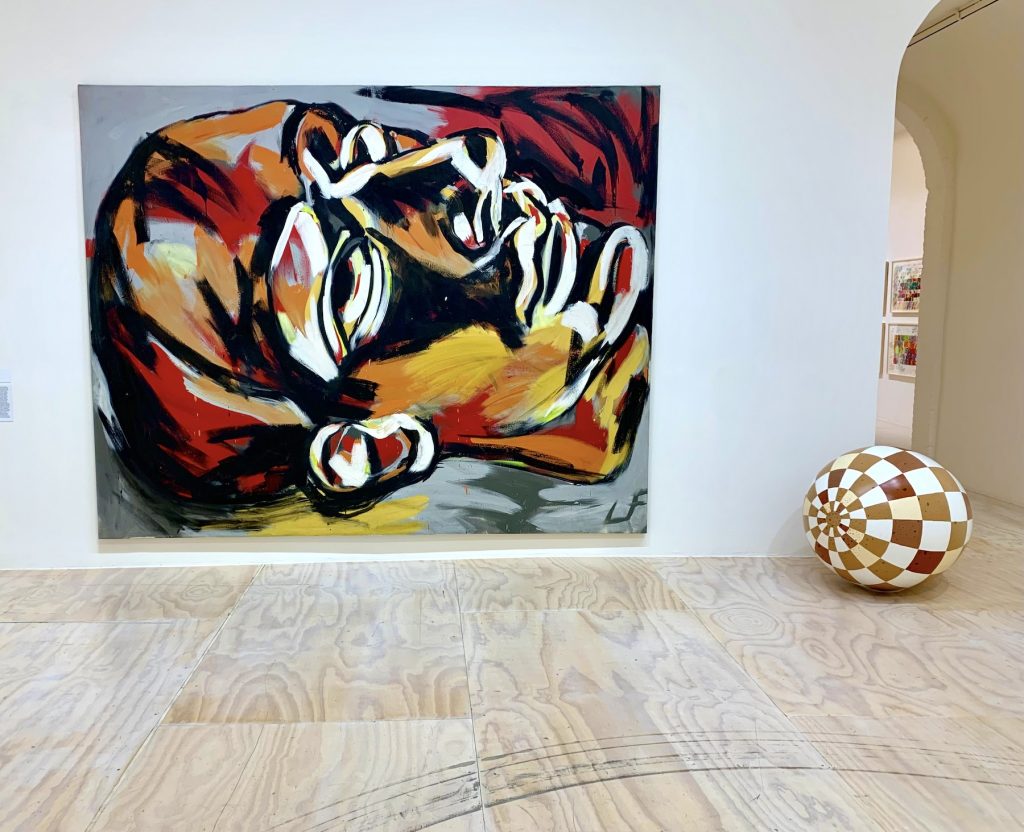
What began as a survey of New York's present feels more intergenerational and international than ever.

Eileen Kinsella

The fifth edition of “Greater New York,” the recurring exhibition organized by MoMA PS1, is back. The trend-setting show is always highly anticipated, but may be even more so this time around because it was delayed by a year due to the COVID-19 pandemic.
It includes 47 artists and collectives spread across three floors of PS1. The selection feels more intergenerational than ever, which makes for an exciting mix. Works that suggest historical perspectives on life in New York appear seamlessly alongside younger artists’ attempts to capture the momentous present.
Of the living artists in the show, the oldest is Bettina Grossman, born 1927. The youngest is Kristi Cavataro, born 1992.
Background: Ahmed Morsi, Clocks 1996). Foreground: Bettina Grossman, option for an angle, 24 inconstants from one constant (1971). Photo by Ben Davis.
MoMA PS1 curator Ruba Katrib, who led the team that curated this edition, told Artnet News that this year’s “Greater New York” looks at “artists’ relationships in the city through strategies of surrealism and documentary.” These two modes, often viewed as opposites—one dealing with reality, the other with dreams—criss-cross throughout PS1’s galleries.
In the later category, she pointed to the work of photographer Marilyn Nance, famous for her work documenting African-American life and the African diaspora in New York (and beyond, though the works in this show are focused on New York City), as well as Hiram Maristany who grew up in East Harlem and regularly documented the lives of the close-knit Puerto Rican community.
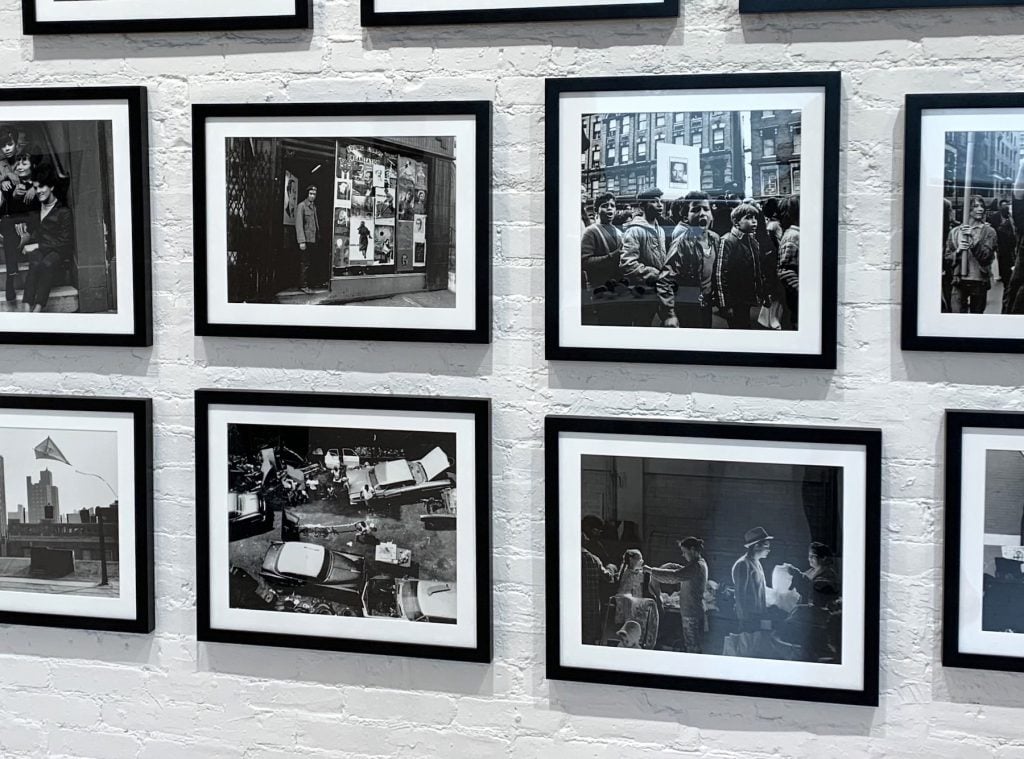
Works by Hiram Maristany in “Greater New York.” Photo by Ben Davis.
Maristany was the official photographer of the activist group known as the Young Lords, Katrib noted. In addition to protests where they asserted their rights, the Lords were also involved in activities to support the East Harlem community, including organizing clothing drives and picking up trash.
Katrib pointed to a more contemporary documentary impulse in the work of Black Mass Publishing, a collective established in 2018. The group publishes zines and books of both new and archival content by Black artists aimed at fostering new conversations about Black cultural production.
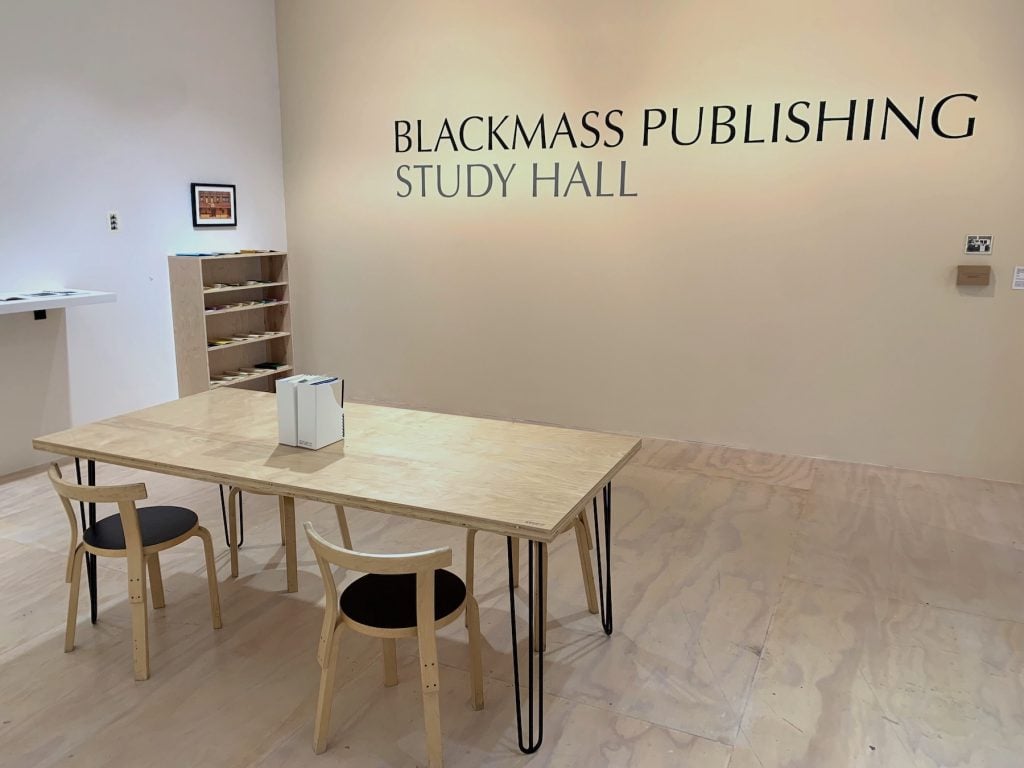
Installation view of gallery devoted to Blackmass Publishing in “Greater New York.” Photo by Ben Davis.
In “Greater New York,’ one gallery, dubbed “Black Mass Publishing Study Hall,” features a library of zines and pamphlets to peruse.
Another work that seems to encapsulate New York City’s former gritty downtown days is the video of poet Diane Burns. Standing in front of trash and rubble-strewn empty lots, against a backdrop of ghostly tenement buildings, Burns is captured reciting her poem, Alphabet City Serenade, her voice looping in the galleries.
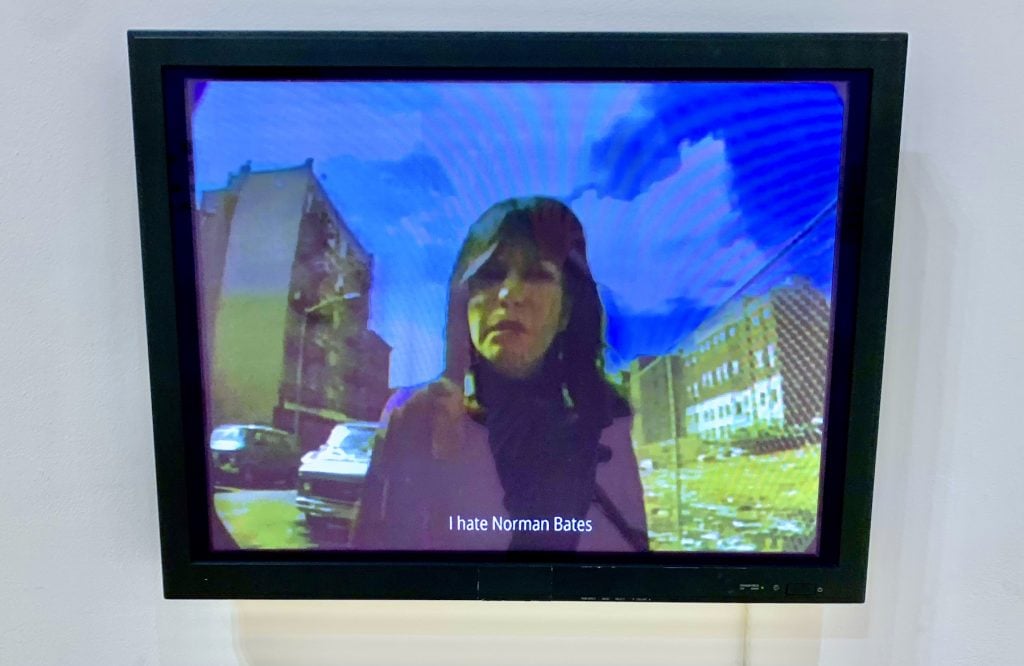
Video of Diane Burns, Poetry Spots: Diane Burns reads ‘Alphabet City Serenade’ (1989) in “Greater New York.” Photo by Ben Davis.
Burns, who was born in Kansas to a Chemehuevi father and an Anishinabe mother, ruminates on “Loisada” versus her life back home. “Hey man, can you spare a cigarette? Do you know of a place to sublet?,” she riffs.
Katrib pointed to Japanese-American artist Yuji Agematsu as using a mixture of both documentary and surrealism to convey his experience. zip:01.01.20 . . .12:31.20 (2020) is a massive but delicate wall-length work composed of a series of vitrines.
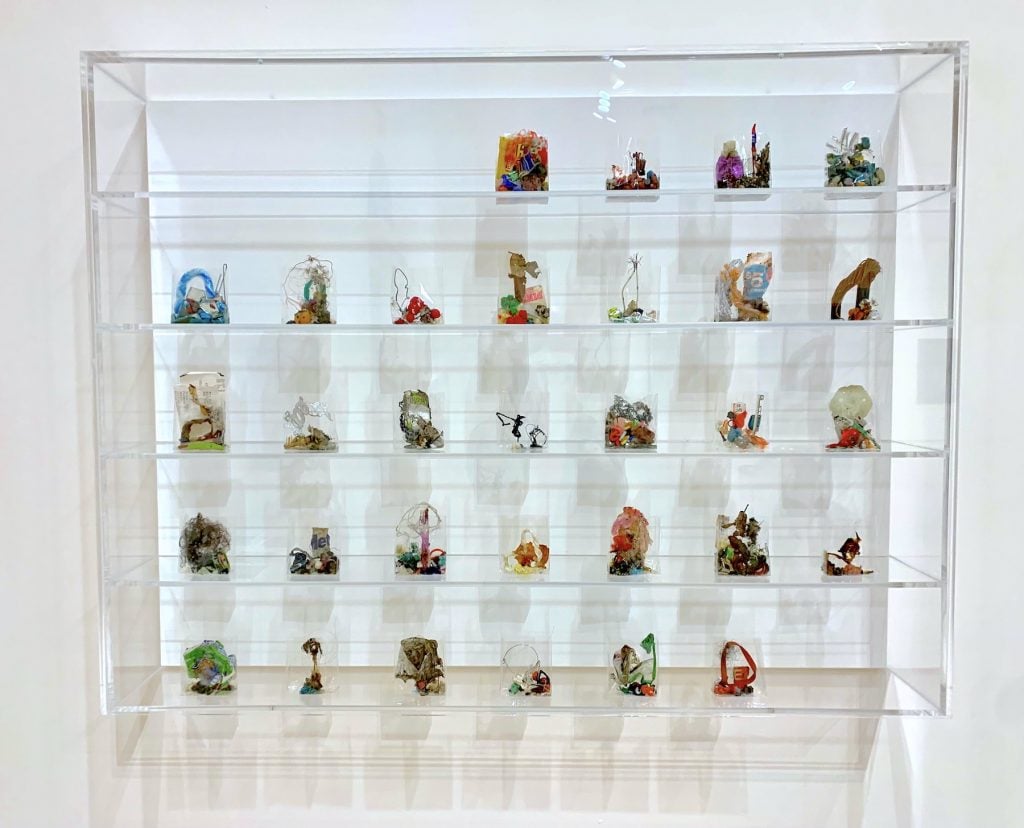
One of the cases from Yuji Agematsu, zip:01.01.20 . . .12:31.20 (2020). Photo by Ben Davis.
Inside each is a “calendar” with individual days portrayed as intact cellophane cigarette wrappers that serve as containers for the debris the artist gathered and placed in them on a particular day—chewed gum, bottle caps, scraps of paper—after having gathered them from the streets of New York.
“It’s like this calendar archive document, but it’s also very surreal and abstract,” says Katrib.
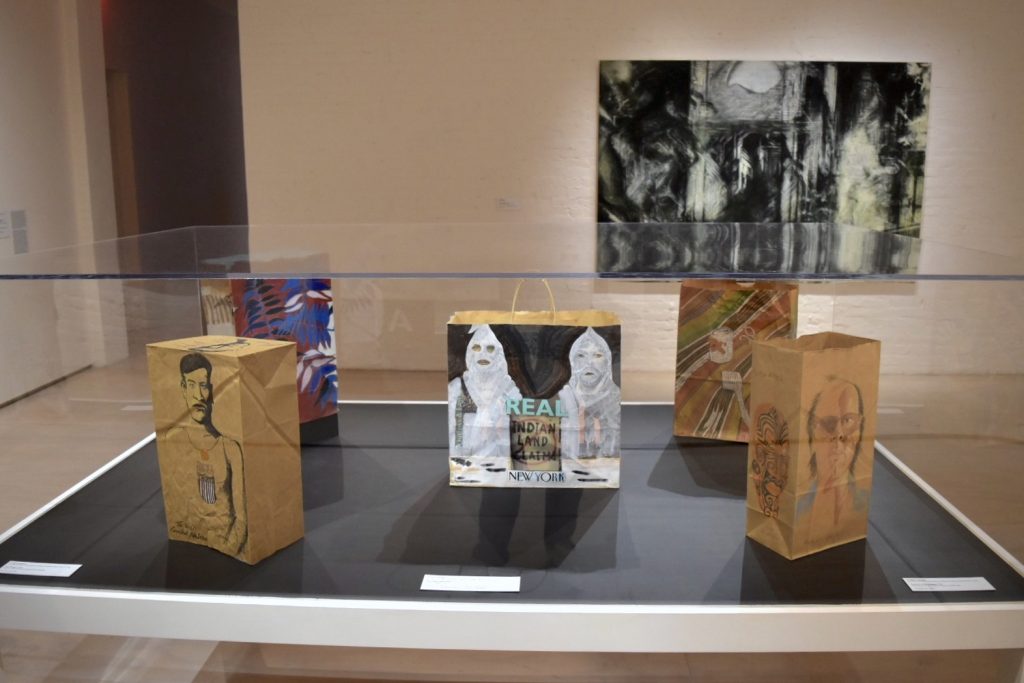
Works by G. Peter Jemison in “Greater New York.” Photo by Ben Davis.
The show has a focus on issues related to indigeneity. You see this, for instance, in the work of G. Peter Jemison, an enrolled member of the Seneca Nation of Indians. But it is also international in scope, incorporating the work of artists from Brazil, Iran, Lebanon, and Egypt, often touching on issues of attempted integration and feelings of estrangement.
The curatorial team also includes writer and curator Serubiri Moses, MoMA PS1 director Kate Fowle, and MoMA Latin American art curator Inés Katzenstein. After more than a year of lockdown and organizing—including Zoom studio visits with artists who were just minutes away—the show they have produced feels both timely and on point.
“The situation we’re in now is really just underscoring and underlining the things that artists were already dealing with,” says Katrib. “I think one of the biggest challenges was just the isolation, especially for the older generation of artists who were more at risk. We really wanted to respect and honor that New York is a city where different generations of artists can be together and support one another.”
“Greater New York” is on view at MoMA PS1 in New York through April 18, 2022.